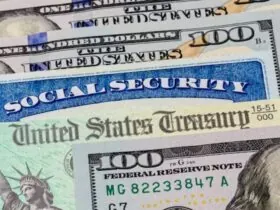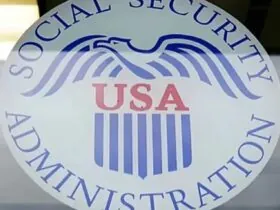Navigating the world of student loan forgiveness can be a complex process, especially with the rise of scams targeting borrowers. The U.S. Department of Education (ED) is actively working to keep borrowers informed about their options for student debt relief. This article will help you understand how to recognize legitimate communications from the ED and how to protect yourself from potential scams.
Understanding Student Debt Relief Notifications
This Article Includes [hide]
If you hold federal student loans, it’s important to stay alert for communications from the Department of Education. Recently, the ED has begun sending out emails to borrowers regarding potential student debt relief options. These notifications are designed to keep you informed about your eligibility and the steps involved.
Learn which email addresses are safe and which ones to ignore in this Consumer Alert from the Federal Trade Commission and help military families spot student loan #scams.https://t.co/jgIJe4lOe7
— OneOp (@OneOpTeam) September 15, 2024
No Action Required for Relief
One crucial point to remember is that if you qualify for relief, you do not need to take any immediate action to receive it. The Department of Education will process your eligibility automatically. However, if you choose to decline this relief, you must contact your loan servicer to opt out. It is essential to act promptly, as opting out is permanent; you won’t have the option to opt back in later.
Spotting Legitimate Communications from the ED
As you navigate your student loan forgiveness journey, it’s vital to differentiate between legitimate communications and potential scams. Here are some key indicators of legitimate emails from the Department of Education:
Recognizable Email Addresses
Authentic communications will come from specific email addresses, including:
- noreply@studentaid.gov
- noreply@debtrelief.studentaid.gov
- ed.gov@public.govdelivery.com
If you receive emails from addresses outside of these, treat them with suspicion and consider deleting them.
Red Flags to Watch For
Be cautious of emails that:
- Promise immediate results or quick relief.
- Request your StudentAid.gov account login credentials.
- Contain high-pressure language, urging you to act quickly to qualify for forgiveness.
The ED and its partners do not employ aggressive marketing tactics or promise unrealistic outcomes. If an email sounds too good to be true, it likely is.
SCAM 🚨 Got an email from Secretary Miguel Cardona about your federal student loans? 📧 It’s real and crucial! But beware: scammers are out there spreading fake info to trick you. Stay sharp and don’t let them steal your hard-earned money. 💡🔒https://t.co/wogS0KwxSC
— Connecticut Department of Consumer Protection (@CTDCP) August 23, 2024
Understanding Scam Tactics
Scammers often employ deceptive strategies to exploit borrowers seeking student loan forgiveness. Here are some common tactics to watch out for:
Requests for Upfront Payments
Legitimate loan servicers will not charge you for services related to your student loans, including repayment options or forgiveness programs. If someone asks for upfront payment for assistance you can receive for free, it’s a clear indicator of a scam.
Pressure to Act Quickly
Scam communications often include phrases like “Act now!” or “Limited time offer!” These high-pressure messages are designed to create a sense of urgency, pushing you to make hasty decisions without thoroughly evaluating your options.
What to Do If You Suspect a Scam
If you believe you have fallen victim to a scam or received suspicious communications, do not panic. Take these steps to protect yourself:
- Contact Your Loan Servicer: Ensure that no unauthorized actions have been taken on your loans. Your loan servicer can clarify any changes or notifications you’ve received.
- Monitor Your Financial Statements: Check your bank statements for any unusual transactions. If you notice anything suspicious, contact your bank or credit card company immediately to halt any payments.
- Report the Scam: Inform authorities about the scam by reporting it to the Federal Trade Commission (FTC) and the Consumer Financial Protection Bureau (CFPB). Reporting helps combat fraudulent activities and protects other borrowers.
Conclusion
Navigating student loan forgiveness doesn’t have to be overwhelming. By staying informed about legitimate communications from the Department of Education and recognizing potential scams, you can protect your financial future. Always remember to consult your loan servicer for guidance and support throughout the process, ensuring you take advantage of available resources without falling victim to fraud.







Leave a Reply